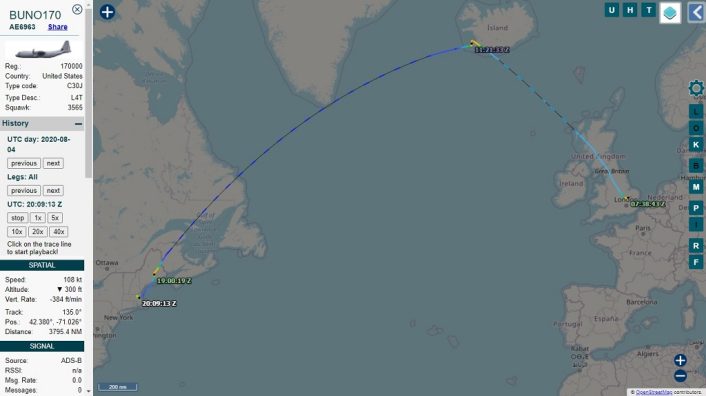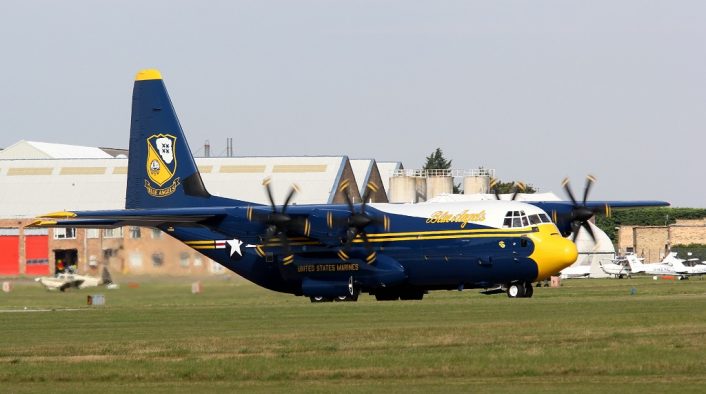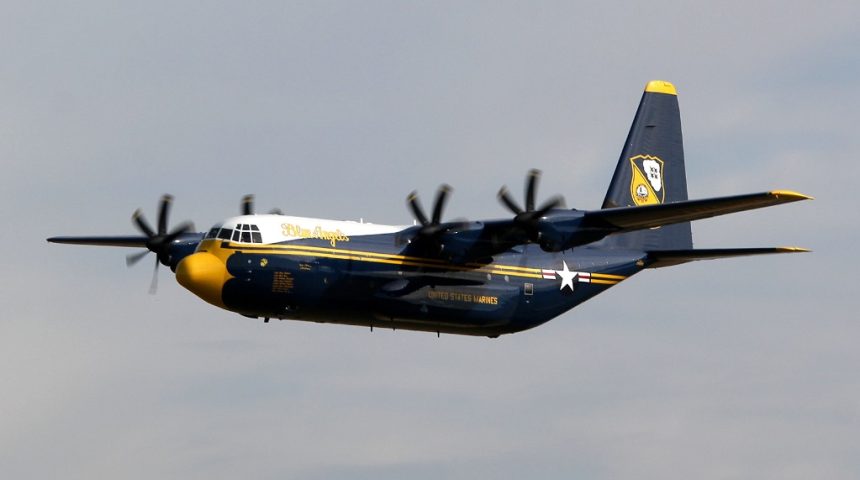The C-130J was flying from Cambridge, UK, to Fort Worth, but had to divert to Boston to solve an issue with the aircraft.
The Blue Angels’ support aircraft, the C-130J “Fat Albert” is finally in the United States. The aircraft was originally supposed to fly to Naval Air Station Fort Worth Joint Reserve Base (Texas) for scheduled maintenance, before flying to the team’s home base at NAS Pensacola (Florida), however it diverted to Boston Logan International Airport to investigate an issue that activated a caution light in the cockpit.
Captain Beau Mabery, lead “Fat Albert” pilot, used Instagram and Facebook stories to update the fans about the unexpected diversion:” It’s been a long day, we had a caution pop up in the aircraft and we decided to take the safest route possible and land. So, we’re here now and we have our extremely competent crew out there that are working, pulling off panels, figuring out what’s going on.”
Before heading back to the USA, the former RAF C-130J flew two Functional Check Flights (FCF), on July 20 and 28. On Aug. 4, the aircraft departed Cambridge in the morning for the transatlantic flight, using the same BUNO170 callsign used during the FCFs (from the Bureau Number 170000 assigned to the C-130J). Fat Albert performed two quick fuel stops, one hour each, at Keflavik International Airport (Iceland) and at Bangor Air National Guard Base (Maine), for a total flight time (excluding the time on the ground) of about ten hours.

In a press release, Air Marshal Sir Julian Young, Royal Air Force Chief of Materiel (Air), said about the departure of Fat Albert from Cambridge airport: “The UK MOD was proud to work alongside multiple stakeholders to help deliver this great aircraft to the United States Navy Blue Angels. It really was a team effort from both sides of the Atlantic. This C-130J aircraft served the Royal Air Force well over the years, and I am delighted that following a refurb it will now go on to serve another military force. With its bright, new livery I’m sure the new Blue Angels C-130J will turn heads wherever it goes.”
As you may already know, the new C-130J is the former Royal Air Force Hercules C5 ZH885, retired following the reduction in the size of the RAF Hercules fleet to retain only the longer C-130J-30 (Hercules C4) and acquired by NAVAIR (Naval Air Systems Command) to replace the former Fat Albert C-130T Bu.No. 164763 that flew more than 30,000 hours with the Blue Angels since 2002.
The Marshall Aerospace and Defence group at Cambridge refurbished the aircraft, performing depth maintenance and repainting it in the iconic Blue Angels’ livery, while the all US Marines crew (three pilots, two loadmasters and two flight engineers) transitioned to the new Hercules variant with the help of Marine Aerial Refueler Transport Squadron 234 (VMGR 234) at Naval Air Station Joint Reserve Base Fort Worth.

Marshall ADG CEO, Alistair McPhee, was there to salute the C-130’s departure: “The aircraft looked absolutely stunning as it left Cambridge this morning. We are delighted to have been able to use our experience and expertise to support the US Navy in bringing its new C-130J into service and I am sure, like its predecessor, it will prove a valuable asset for many, many years to come.”
By the way, if you ever wondered where the Blue Angels’ C-130 did get the nickname, here is the explanation provided by the team’s official website:
“Fat Albert” is a nickname given to the plane by Marine Corps Blue Angel pilots in the 1970s because of its size and shape. It is a reference to the popular children’s cartoon of the same era.









